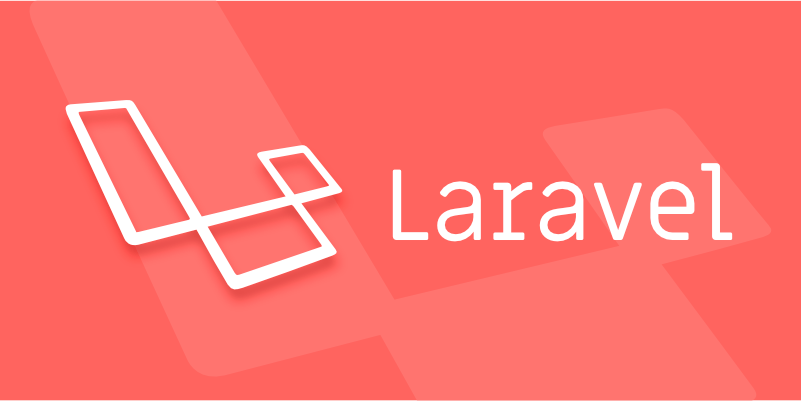Scheduling Tasks with Laravel Scheduler.
Jul 18, 2025 am 02:42 AMLaravel Scheduler allows developers to define timing tasks through code without manually configuring Cron entries, improving efficiency and ease of maintenance. You can define tasks in the schedule method of the Kernel.php file, such as setting the execution frequency using daily(), hourly(), or cron(). It is recommended to encapsulate complex logic into Artisan commands and use withoutOverlapping() to prevent concurrent execution. During debugging, you can use sendOutputTo() or emailOutputTo() to output logs. During deployment, ensure that only one scheduler process runs and avoid duplicate tasks. During testing, php artisan schedule:run can simulate scheduling behavior, and long-term tasks should be processed asynchronously to avoid blocking.

Laravel Scheduler is a very practical tool that allows you to define timing tasks through code without manually configuring Cron entries on the server. This not only improves development efficiency, but also makes task scheduling easier to maintain and version control.

Basic usage: One line of code to handle timed tasks
In Laravel, all timing tasks are defined in the app/Console/Kernel.php file. You just need to add tasks in schedule method of this file. For example:
protected function schedule(Schedule $schedule)
{
$schedule->command('emails:send')->daily();
} This code means to execute the Artisan command emails:send once a day. Laravel supports a variety of frequency settings, such as hourly() , dailyAt('10:00') , weekly() , etc.

Note: You need to set up a unique Cron entry on the server to drive Laravel's scheduler to run:
* * * * * php /path-to-your-project/artisan schedule:run >> /dev/null 2>&1
This way Laravel will check once a minute for tasks that need to be performed.

Common usage scenarios and suggestions
Execute commands or closure functions
You can schedule the Artisan command or execute closure functions directly:
$schedule->call(function () {
// For example, clean cache or log logs})->daily();This method is suitable for some simple logic, but if the data processed is large or takes a long time, it is recommended to encapsulate it into commands for easy debugging and multiplexing.
Set the task execution time point
Sometimes you want a task to be performed at a specific time of day, such as two o'clock in the morning:
$schedule->command('backup:database')->dailyAt('2:00');
If you need more complex scheduling rules, you can use cron() method to customize the Cron expression:
$schedule->command('report:generate')->cron('0 8 * * *');
This is equivalent to performing this task at 8 a.m. every day.
Control tasks concurrent execution
By default, new tasks will be triggered even if the previous task has not been completed. If you do not want concurrent execution, you can use withoutOverlapping() :
$schedule->command('process:data')->everyMinute()->withoutOverlapping();
In this way, if the previous task is still running, the next minute task will not start. This is helpful for resource-intensive tasks.
Output log and debugging
When debugging timing tasks, outputting logs is very critical. You can redirect the output to the log file:
$schedule->command('sync:data')->daily()->sendOutputTo($filePath);
Or send the output to the mailbox (provided that the mail service is configured):
$schedule->command('sync:data')->daily()->emailOutputTo('admin@example.com');
However, it should be noted that some tasks may output a lot of content, and it is recommended to decide whether to enable these functions based on actual conditions.
Some details of actual deployment
- Make sure there is only one scheduled daemon : If you deploy a project on multiple servers, be sure to run Cron with
schedule:runin only one place, otherwise the task will be executed repeatedly. - Test task behavior : In the local development environment, you can directly run
php artisan schedule:runto simulate scheduling behavior and observe whether the output meets expectations. - Avoid long-term blocking : If you have a task that takes a very long time to execute, it is recommended to process asynchronously or put it in a queue to avoid affecting subsequent tasks.
Basically that's it. Laravel Scheduler is not complicated to use, but many details are easy to ignore, especially in production environments, and reasonable configuration can avoid many problems.
The above is the detailed content of Scheduling Tasks with Laravel Scheduler.. For more information, please follow other related articles on the PHP Chinese website!

Hot AI Tools

Undress AI Tool
Undress images for free

Undresser.AI Undress
AI-powered app for creating realistic nude photos

AI Clothes Remover
Online AI tool for removing clothes from photos.

Clothoff.io
AI clothes remover

Video Face Swap
Swap faces in any video effortlessly with our completely free AI face swap tool!

Hot Article

Hot Tools

Notepad++7.3.1
Easy-to-use and free code editor

SublimeText3 Chinese version
Chinese version, very easy to use

Zend Studio 13.0.1
Powerful PHP integrated development environment

Dreamweaver CS6
Visual web development tools

SublimeText3 Mac version
God-level code editing software (SublimeText3)
 How to set environment variables in PHP environment Description of adding PHP running environment variables
Jul 25, 2025 pm 08:33 PM
How to set environment variables in PHP environment Description of adding PHP running environment variables
Jul 25, 2025 pm 08:33 PM
There are three main ways to set environment variables in PHP: 1. Global configuration through php.ini; 2. Passed through a web server (such as SetEnv of Apache or fastcgi_param of Nginx); 3. Use putenv() function in PHP scripts. Among them, php.ini is suitable for global and infrequently changing configurations, web server configuration is suitable for scenarios that need to be isolated, and putenv() is suitable for temporary variables. Persistence policies include configuration files (such as php.ini or web server configuration), .env files are loaded with dotenv library, and dynamic injection of variables in CI/CD processes. Security management sensitive information should be avoided hard-coded, and it is recommended to use.en
 What is Configuration Caching in Laravel?
Jul 27, 2025 am 03:54 AM
What is Configuration Caching in Laravel?
Jul 27, 2025 am 03:54 AM
Laravel's configuration cache improves performance by merging all configuration files into a single cache file. Enabling configuration cache in a production environment can reduce I/O operations and file parsing on each request, thereby speeding up configuration loading; 1. It should be enabled when the application is deployed, the configuration is stable and no frequent changes are required; 2. After enabling, modify the configuration, you need to re-run phpartisanconfig:cache to take effect; 3. Avoid using dynamic logic or closures that depend on runtime conditions in the configuration file; 4. When troubleshooting problems, you should first clear the cache, check the .env variables and re-cache.
 How to develop AI intelligent form system with PHP PHP intelligent form design and analysis
Jul 25, 2025 pm 05:54 PM
How to develop AI intelligent form system with PHP PHP intelligent form design and analysis
Jul 25, 2025 pm 05:54 PM
When choosing a suitable PHP framework, you need to consider comprehensively according to project needs: Laravel is suitable for rapid development and provides EloquentORM and Blade template engines, which are convenient for database operation and dynamic form rendering; Symfony is more flexible and suitable for complex systems; CodeIgniter is lightweight and suitable for simple applications with high performance requirements. 2. To ensure the accuracy of AI models, we need to start with high-quality data training, reasonable selection of evaluation indicators (such as accuracy, recall, F1 value), regular performance evaluation and model tuning, and ensure code quality through unit testing and integration testing, while continuously monitoring the input data to prevent data drift. 3. Many measures are required to protect user privacy: encrypt and store sensitive data (such as AES
 How to make PHP container support automatic construction? Continuously integrated CI configuration method of PHP environment
Jul 25, 2025 pm 08:54 PM
How to make PHP container support automatic construction? Continuously integrated CI configuration method of PHP environment
Jul 25, 2025 pm 08:54 PM
To enable PHP containers to support automatic construction, the core lies in configuring the continuous integration (CI) process. 1. Use Dockerfile to define the PHP environment, including basic image, extension installation, dependency management and permission settings; 2. Configure CI/CD tools such as GitLabCI, and define the build, test and deployment stages through the .gitlab-ci.yml file to achieve automatic construction, testing and deployment; 3. Integrate test frameworks such as PHPUnit to ensure that tests are automatically run after code changes; 4. Use automated deployment strategies such as Kubernetes to define deployment configuration through the deployment.yaml file; 5. Optimize Dockerfile and adopt multi-stage construction
 Explain Laravel Eloquent Scopes.
Jul 26, 2025 am 07:22 AM
Explain Laravel Eloquent Scopes.
Jul 26, 2025 am 07:22 AM
Laravel's EloquentScopes is a tool that encapsulates common query logic, divided into local scope and global scope. 1. The local scope is defined with a method starting with scope and needs to be called explicitly, such as Post::published(); 2. The global scope is automatically applied to all queries, often used for soft deletion or multi-tenant systems, and the Scope interface needs to be implemented and registered in the model; 3. The scope can be equipped with parameters, such as filtering articles by year or month, and corresponding parameters are passed in when calling; 4. Pay attention to naming specifications, chain calls, temporary disabling and combination expansion when using to improve code clarity and reusability.
 PHP development user permission management monetization PHP permission control and role management
Jul 25, 2025 pm 06:51 PM
PHP development user permission management monetization PHP permission control and role management
Jul 25, 2025 pm 06:51 PM
User permission management is the core mechanism for realizing product monetization in PHP development. It separates users, roles and permissions through a role-based access control (RBAC) model to achieve flexible permission allocation and management. The specific steps include: 1. Design three tables of users, roles, and permissions and two intermediate tables of user_roles and role_permissions; 2. Implement permission checking methods in the code such as $user->can('edit_post'); 3. Use cache to improve performance; 4. Use permission control to realize product function layering and differentiated services, thereby supporting membership system and pricing strategies; 5. Avoid the permission granularity is too coarse or too fine, and use "investment"
 How to use PHP combined with AI to analyze video content PHP intelligent video tag generation
Jul 25, 2025 pm 06:15 PM
How to use PHP combined with AI to analyze video content PHP intelligent video tag generation
Jul 25, 2025 pm 06:15 PM
The core idea of PHP combining AI for video content analysis is to let PHP serve as the backend "glue", first upload video to cloud storage, and then call AI services (such as Google CloudVideoAI, etc.) for asynchronous analysis; 2. PHP parses the JSON results, extract people, objects, scenes, voice and other information to generate intelligent tags and store them in the database; 3. The advantage is to use PHP's mature web ecosystem to quickly integrate AI capabilities, which is suitable for projects with existing PHP systems to efficiently implement; 4. Common challenges include large file processing (directly transmitted to cloud storage with pre-signed URLs), asynchronous tasks (introducing message queues), cost control (on-demand analysis, budget monitoring) and result optimization (label standardization); 5. Smart tags significantly improve visual
 How to build a content payment platform through PHP How to implement PHP paid reading system
Jul 25, 2025 pm 06:30 PM
How to build a content payment platform through PHP How to implement PHP paid reading system
Jul 25, 2025 pm 06:30 PM
To build a PHP content payment platform, it is necessary to build a user management, content management, payment and permission control system. First, establish a user authentication system and use JWT to achieve lightweight authentication; second, design the backend management interface and database fields to manage paid content; third, integrate Alipay or WeChat payment and ensure process security; fourth, control user access rights through session or cookies. Choosing the Laravel framework can improve development efficiency, use watermarks and user management to prevent content theft, optimize performance requires coordinated improvement of code, database, cache and server configuration, and clear policies must be formulated and malicious behaviors must be prevented.






